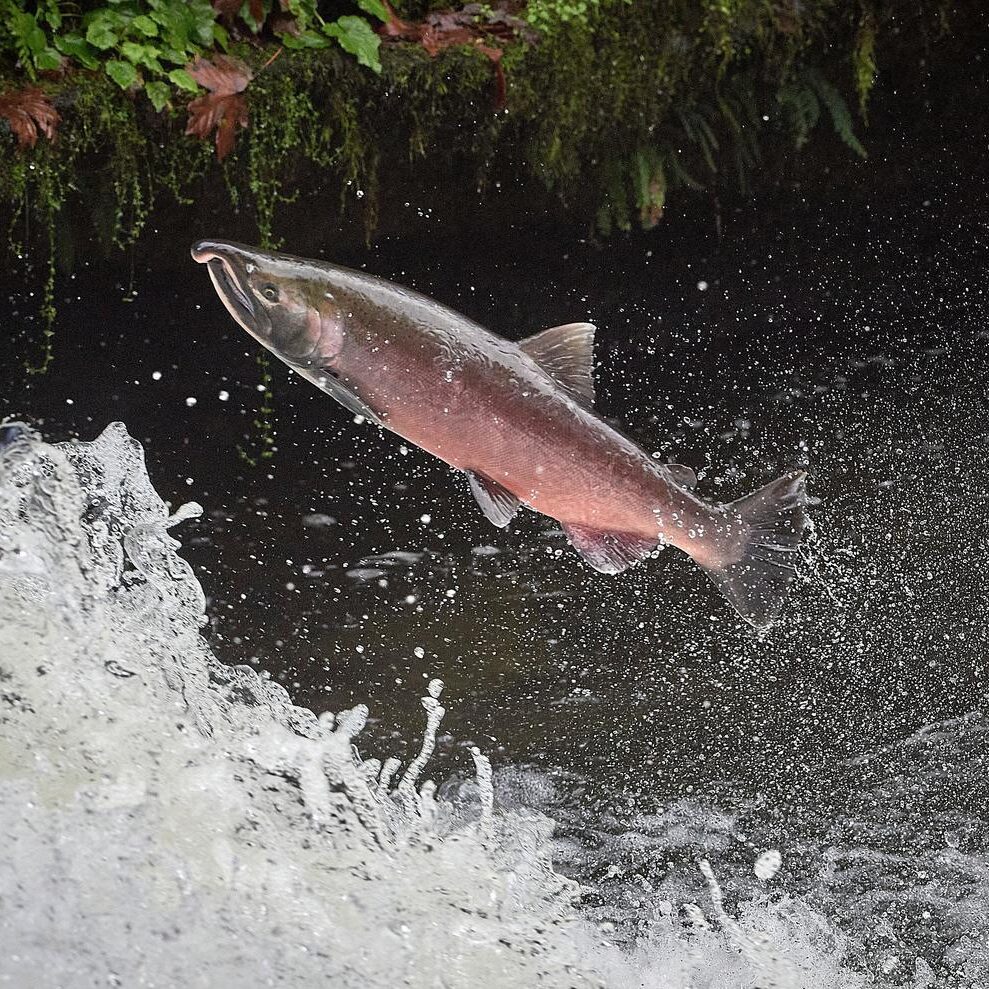In Oregon, strong coho returns are good news for this year’s fisheries. But what about the future?
An expanded fishing season off the Oregon Coast. Early fishing at the Columbia River’s Buoy 10. Record returns above Willamette Falls. For Oregon coho salmon fishers, an exceptionally good 2024 fishing season has been a welcome surprise. For salmon conservationists, takeaways are a bit more complicated.
“When we have strong returns like this, we want to understand what’s going well, so we can do more of that, if we can,” says Wild Salmon Center Watershed Restoration Director Jess Helsley. “But in salmon recovery, there’s an ocean of factors at play.”
“When we have strong returns like this, we want to understand what’s going well, so we can do more of that.”
Jess Helsley, Wild Salmon Center Watershed Restoration Director
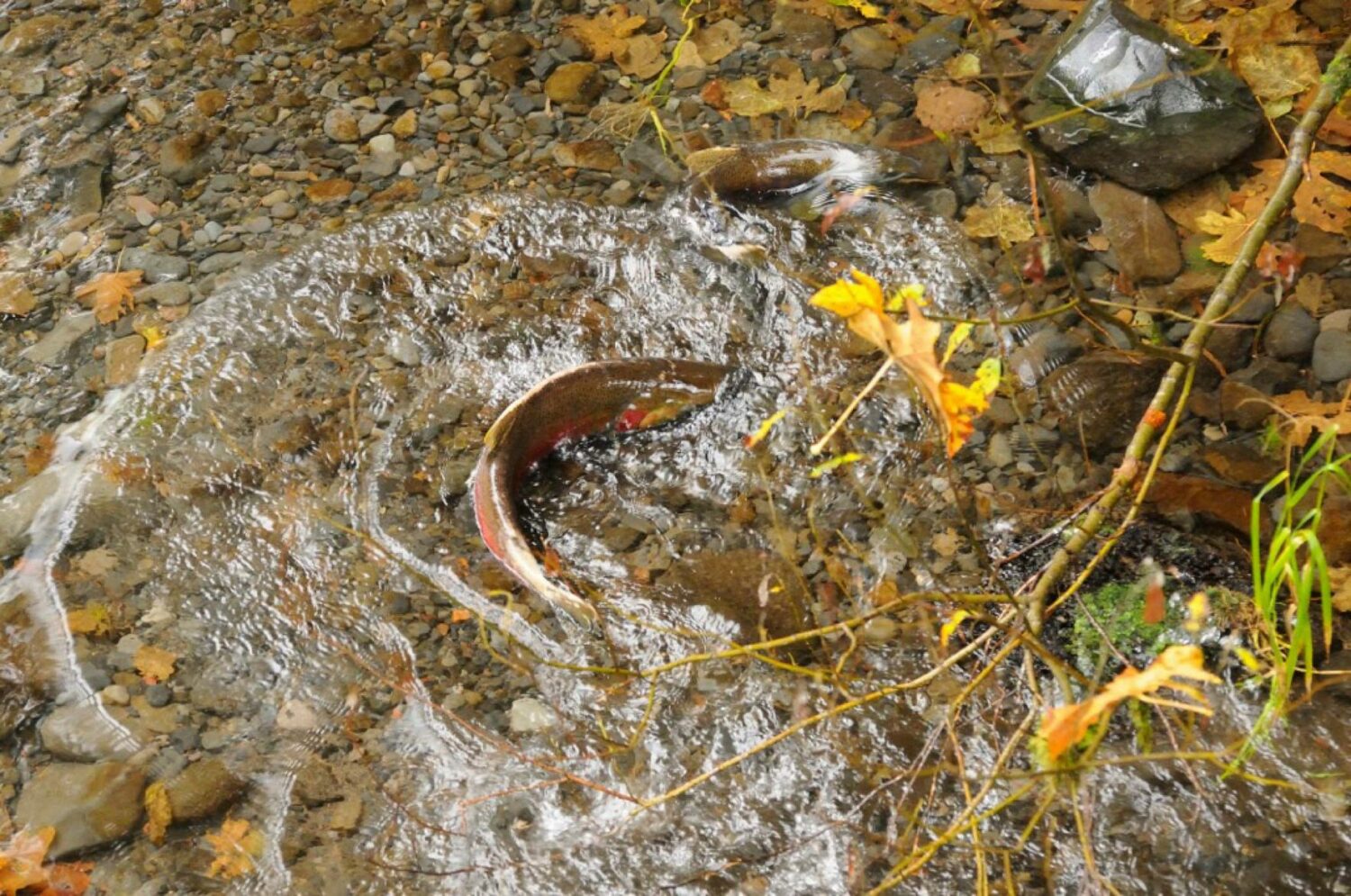
Starting with the ocean itself: the biggest single factor shaping Pacific salmon returns. According to experts, recent favorable marine conditions are likely why 2024 steelhead runs have been strong across the Pacific Northwest and Canada. Oregon Coast coho, Helsley says, are benefitting from that same good fortune.
“We know that coho have a hard time during warm ocean cycles,” Helsley says. “The coho runs now making their way into our stronghold rivers had the luck of cooler ocean conditions, and we’re very happy about that. But when ocean conditions shift—and they will—there won’t be a whole lot we can do about that.”
“The coho runs now making their way into our stronghold rivers had the luck of cooler ocean conditions, and we’re very happy about that. But when ocean conditions shift—and they will—there won’t be a whole lot we can do about that.”
Jess Helsley, Wild Salmon Center Watershed Restoration Director
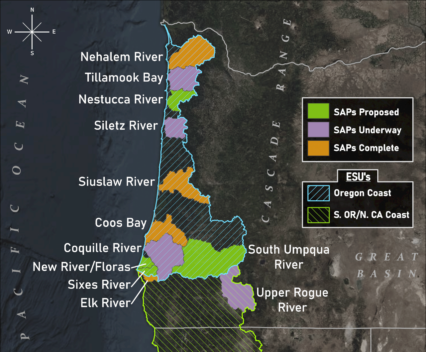
Another factor is likely boosting coho runs this year, however—one that’s very much in our hands. Since 2017, the WSC-led Coast Coho Partnership has actively restored miles of coho habitat up and down the Oregon coast. And this work is accelerating, thanks to unprecedented waves of state and federal funding for restoration and climate resilience. As of this year, we’ve launched science-based, watershed-specific restoration plans for a dozen coastal salmon systems (and counting), from the Elk River to the Nehalem.
And this work is paying off. According to a 2022 report from NOAA Fisheries, significant habitat restoration could be why Oregon’s ESA-listed coho populations are a “bright spot in salmon recovery”—remaining comparatively stable over the past decade, as other West Coast salmon species have declined.
“We’re still too early in the game to measure how, exactly, this work impacts wild coho,” Helsley says. “But we do know that this kind of targeted habitat restoration is the smartest investment we can make to keep coho population trends going in the right direction.”
“We know that this kind of targeted habitat restoration is the smartest investment we can make to keep coho population trends going in the right direction.”
Jess Helsley, Wild Salmon Center Watershed Restoration Director

If we can’t control the ocean, we can make sure that Oregon coho have access to more cold, clean, off-channel habitat during their time in freshwater. Right now, Helsley says, coho are limited by a lack of quality habitat before they even make it to sea. And that’s a bottleneck we can fix.
“Over the past century or so, we blocked off a lot of the best places for juvenile salmonids to rear and grow strong,” Helsley says. “We can’t fix everything, but we can target the most strategic, high-yield projects in each river system. And that’s exactly what we’re doing now with projects like Tioga Falls and Cedar Creek.”
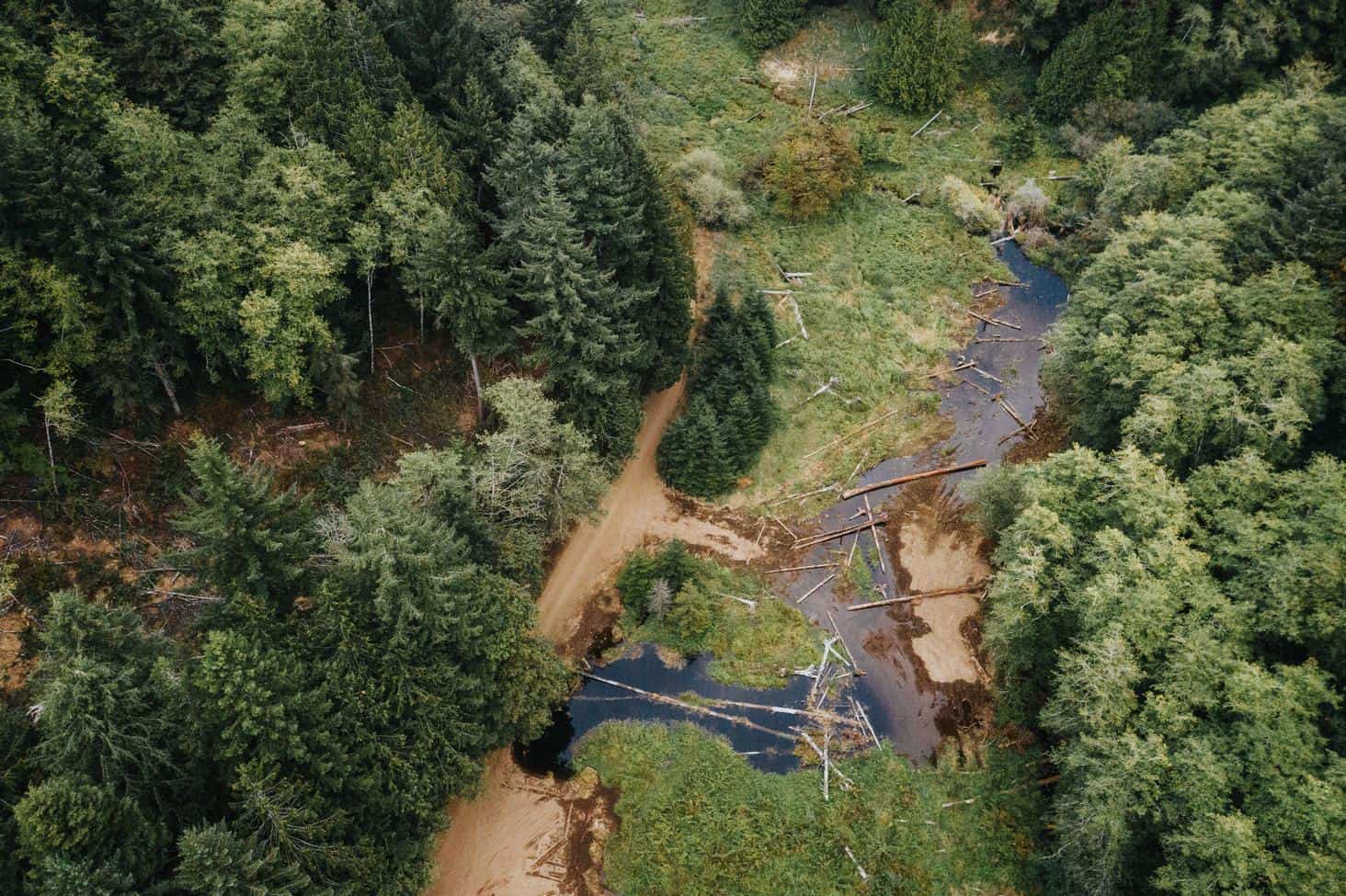
From removing fish barriers to reconnecting floodplains, the Coast Coho Partnership has already made life better for wild fish in systems like the Elk, Siuslaw, Coos, and Nehalem. Over the next decade, Helsley says we can build on the promise of strong coho years like this one—provided that federal investments continue, and state agencies make good on commitments to better steward forestlands and estuaries across the Oregon Coast.
Will we seize this opportunity to shift a “bright spot in salmon recovery” into true light at the end of the tunnel? For coho—a cherished species still teetering on the brink—what we do next will show our commitment to their recovery.
“We can’t fix everything, but we can target the most strategic, high-yield projects in each river system. And that’s exactly what we’re doing now.”
Jess Helsley, Wild Salmon Center Watershed Restoration Director
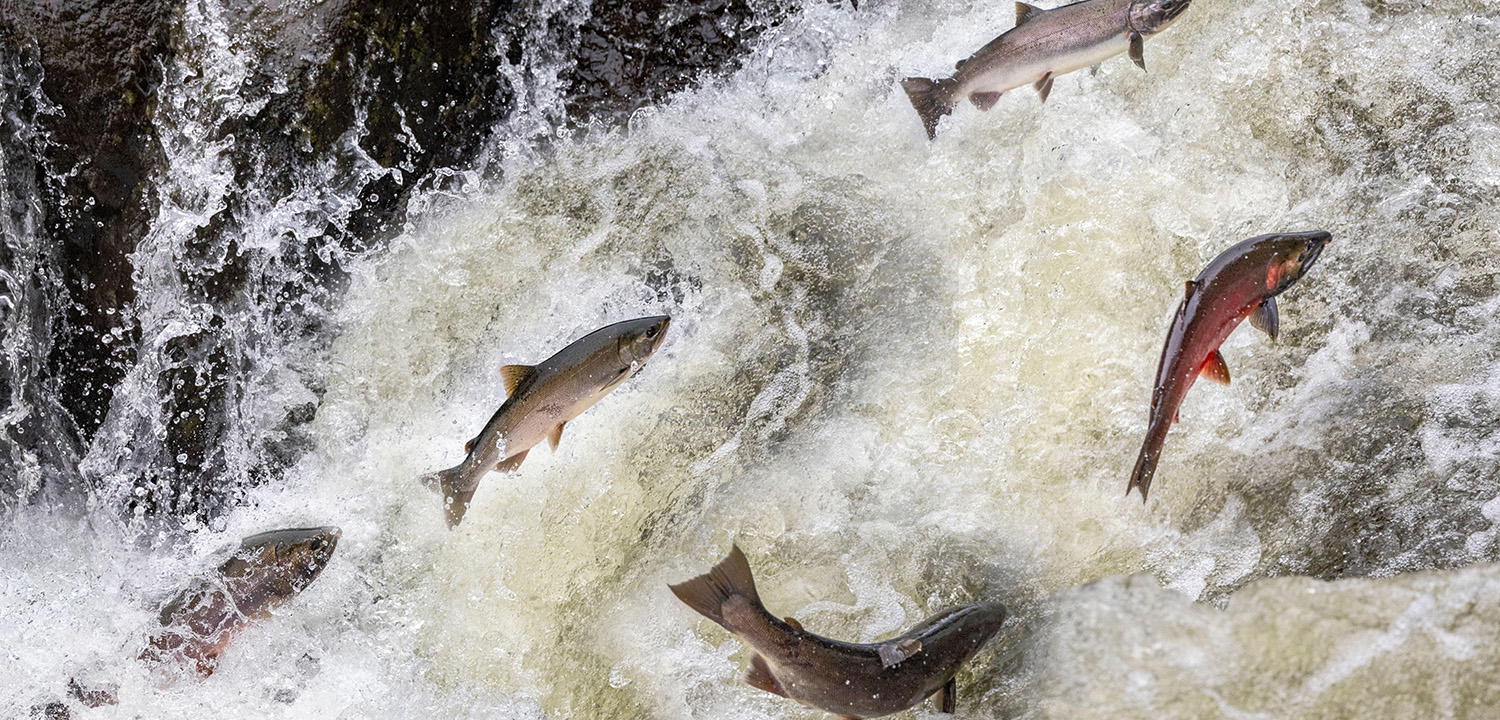
Hero Image
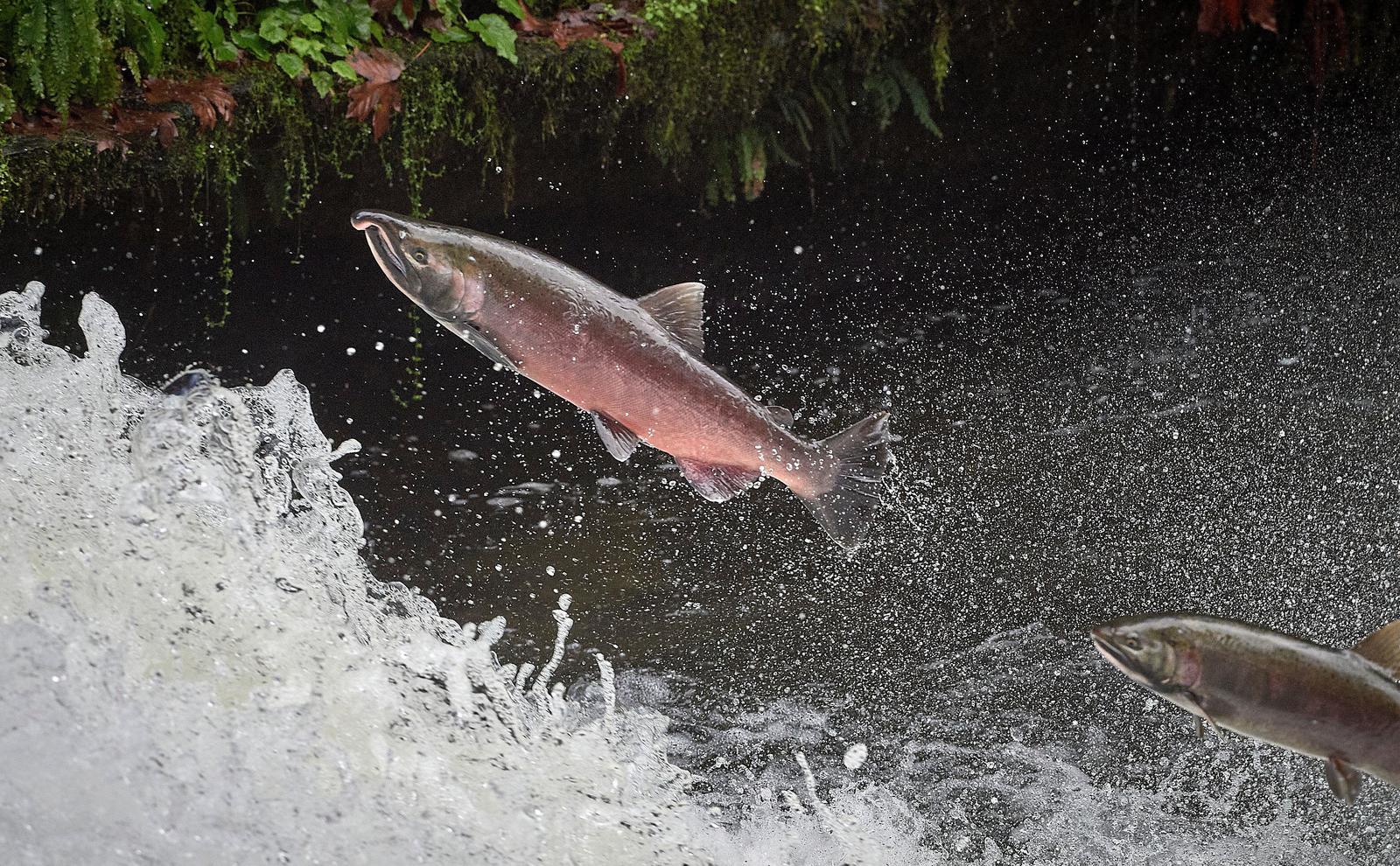
Hero Image (Home Page Section)
